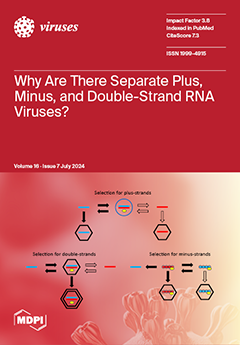Enteric viruses are the leading cause of diarrhoea in children <5 years. Despite existing studies describing rotavirus diarrhoea in Mozambique, data on other enteric viruses remains scarce, especially after rotavirus vaccine introduction. We explored the prevalence of norovirus GI and GII, adenovirus 40/41,
[...] Read more.
Enteric viruses are the leading cause of diarrhoea in children <5 years. Despite existing studies describing rotavirus diarrhoea in Mozambique, data on other enteric viruses remains scarce, especially after rotavirus vaccine introduction. We explored the prevalence of norovirus GI and GII, adenovirus 40/41, astrovirus, and sapovirus in children <5 years with moderate-to-severe (MSD), less severe (LSD) diarrhoea and community healthy controls, before (2008–2012) and after (2016–2019) rotavirus vaccine introduction in Manhiça District, Mozambique. The viruses were detected using ELISA and conventional reverse transcription PCR from stool samples. Overall, all of the viruses except norovirus GI were significantly more detected after rotavirus vaccine introduction compared to the period before vaccine introduction: norovirus GII in MSD (13/195, 6.7% vs. 24/886, 2.7%, respectively;
p = 0.006) and LSD (25/268, 9.3% vs. 9/430, 2.1%,
p < 0.001); adenovirus 40/41 in MSD (7.2% vs. 1.8%,
p < 0.001); astrovirus in LSD (7.5% vs. 2.6%,
p = 0.002); and sapovirus in MSD (7.1% vs. 1.4%,
p = 0.047) and controls (21/475, 4.4% vs. 51/2380, 2.1%,
p = 0.004). Norovirus GII, adenovirus 40/41, astrovirus, and sapovirus detection increased in MSD and LSD cases after rotavirus vaccine introduction, supporting the need for continued molecular surveillance for the implementation of appropriate control and prevention measures.
Full article






